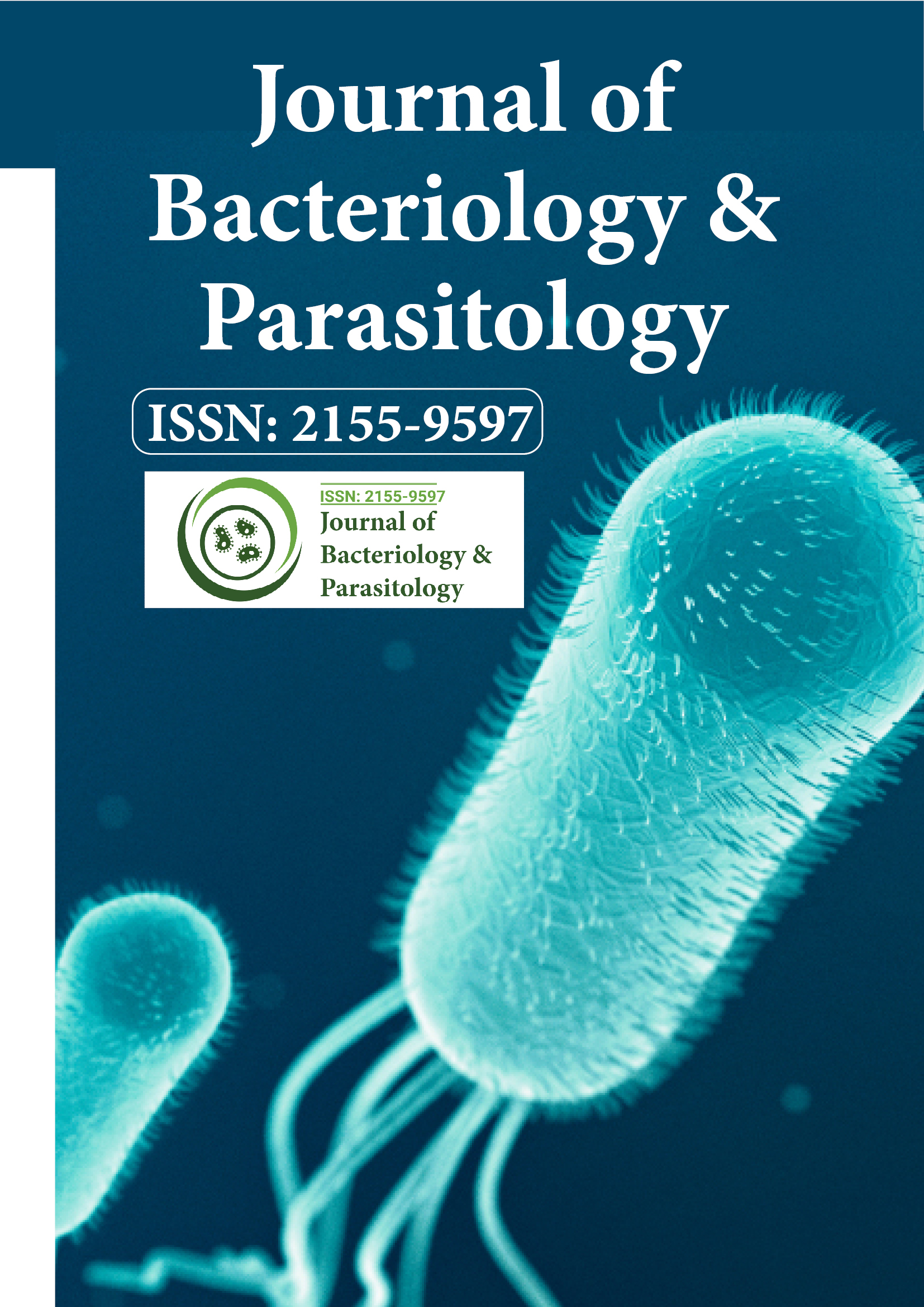Indexed In
- Open J Gate
- Genamics JournalSeek
- Academic Keys
- JournalTOCs
- ResearchBible
- Ulrich's Periodicals Directory
- Access to Global Online Research in Agriculture (AGORA)
- Electronic Journals Library
- RefSeek
- Hamdard University
- EBSCO A-Z
- OCLC- WorldCat
- SWB online catalog
- Virtual Library of Biology (vifabio)
- Publons
- MIAR
- Geneva Foundation for Medical Education and Research
- Euro Pub
- Google Scholar
Useful Links
Share This Page
Journal Flyer

Open Access Journals
- Agri and Aquaculture
- Biochemistry
- Bioinformatics & Systems Biology
- Business & Management
- Chemistry
- Clinical Sciences
- Engineering
- Food & Nutrition
- General Science
- Genetics & Molecular Biology
- Immunology & Microbiology
- Medical Sciences
- Neuroscience & Psychology
- Nursing & Health Care
- Pharmaceutical Sciences
Opinion Article - (2024) Volume 15, Issue 3
Bacterial Biofilms: An Unknown Threat in Parasitic Diseases
Rolbiecki Joanna*Received: 27-Aug-2024, Manuscript No. JBP-24-27255 ; Editor assigned: 30-Aug-2024, Pre QC No. JBP-24-27255 (PQ); Reviewed: 13-Sep-2024, QC No. JBP-24-27255 ; Revised: 20-Sep-2024, Manuscript No. JBP-24-27255 (R); Published: 27-Sep-2024, DOI: 10.35248/2155-9597.24.15.522
Description
Bacterial biofilms represent a unique and often disregarded aspect of microbial life that positions significant challenges in understanding and treating various infectious diseases, including parasitic ones. Biofilms are structured communities of bacteria encased in a self-produced matrix of Extracellular Polymeric Substances (EPS), allowing them to adhere to surfaces, evade the immune system and resist antibiotics. While the role of biofilms has been well documented in bacterial infections, their impact on parasitic diseases is a burgeoning area of research that is beginning to uncover a complex interplay between bacteria and parasites.
Understanding bacterial biofilms
Biofilms are ubiquitous in nature, found in a variety of environments ranging from natural ecosystems to industrial settings. They form when bacteria attach to a surface and begin to multiply, subsequently producing EPS that encases the cells. This structure not only provides protection against environmental threats but also facilitates communication among bacteria through quorum sensing, a process that enables them to coordinate behavior based on population concentration.
In clinical contexts, biofilms are notorious for their role in chronic infections, such as those associated with catheters, prosthetic devices and chronic wounds. The bacteria within biofilms exhibit a phenotypic change that enhances their resistance to antibiotics, making treatment exceedingly difficult. The discovery of biofilms has shifted the paradigm of infectious disease treatment, necessitating a deeper understanding of their formation and persistence.
The intersection of biofilms and parasitic diseases
While research on biofilms has primarily focused on bacterial infections, their implications in parasitic diseases are just beginning to be appreciated. Parasites, including protozoa and helminthes, often coexist with bacteria in host environments and this microbial milieu can influence the pathology and progression of parasitic infections. Biofilms can form in conjunction with parasites, affecting the host's immune response and the overall dynamics of infection.
For instance, in the case of the protozoan parasite Leishmania, studies suggest that the presence of biofilm-forming bacteria can enhance the survival and pathogenicity of the parasite. The biofilm matrix may provide a protective niche that shields the parasites from host immune responses and allows for sustained infection. Additionally, certain bacteria can influence the metabolic processes of parasites, potentially altering their virulence and transmission.
Biofilms and the immune response
One of the most critical aspects of bacterial biofilms in the context of parasitic diseases is their ability to modulate the host immune response. Biofilms can induce a chronic inflammatory state, leading to tissue damage and contributing to the pathogenesis of various diseases. In some cases, the biofilm can mask the presence of parasites, complicating the host's ability to mount an effective immune response.
In parasitic infections, such as those caused by Schistosoma, the interaction between the parasite and biofilm-forming bacteria can lead to altered immune signaling pathways. These interactions may impair the host's ability to control the parasite, resulting in more severe disease outcomes. Furthermore, the presence of biofilms can create a local immunosuppressive environment, facilitating the survival of both bacteria and parasites.
Clinical implications and future directions
The recognition of biofilms as a factor in parasitic diseases has significant clinical implications. Traditional treatments that focus solely on the parasites may overlook the influence of biofilm-associated bacteria, potentially leading to treatment failures. Understanding the interactions between biofilms and parasites is essential for developing effective therapeutic strategies.
Future research should aim to explore the mechanisms by which biofilms affect parasitic infections, focusing on the following key areas:
Molecular interactions: Investigating the molecular signals exchanged between biofilm-forming bacteria and parasites will provide insights into their co-evolution and the impact of these interactions on host-pathogen dynamics.
Targeted therapies: Development of treatments targeting biofilm formation or disrupting the biofilm matrix could enhance the efficacy of existing antiphrastic drugs. Novel antimicrobial strategies that disrupt biofilms may help clear persistent infections.
Diagnostic approaches: Improving diagnostic methods to detect biofilm-associated infections could facilitate earlier and more effective treatment of parasitic diseases.
Ecological aerspectives: Understanding the ecological roles of bacteria in the life cycles of parasites can offer new perspectives on infection control and prevention strategies.
Citation: Joanna R (2024). Bacterial Biofilms: An Unknown Threat in Parasitic Diseases. J Bacteriol Parasitol. 15:522.
Copyright: © 2024 Joanna R. This is an open-access article distributed under the terms of the Creative Commons Attribution License, which permits unrestricted use, distribution, and reproduction in any medium, provided the original author and source are credited.

